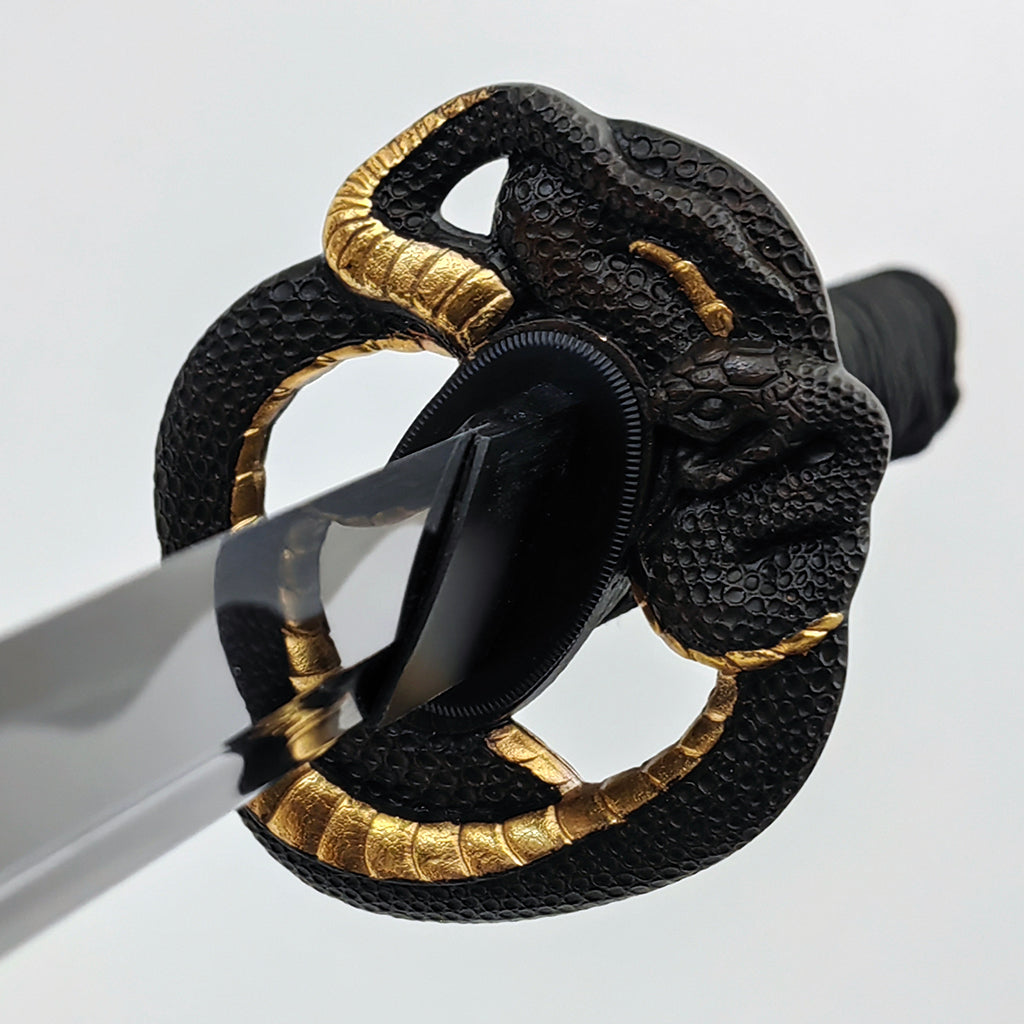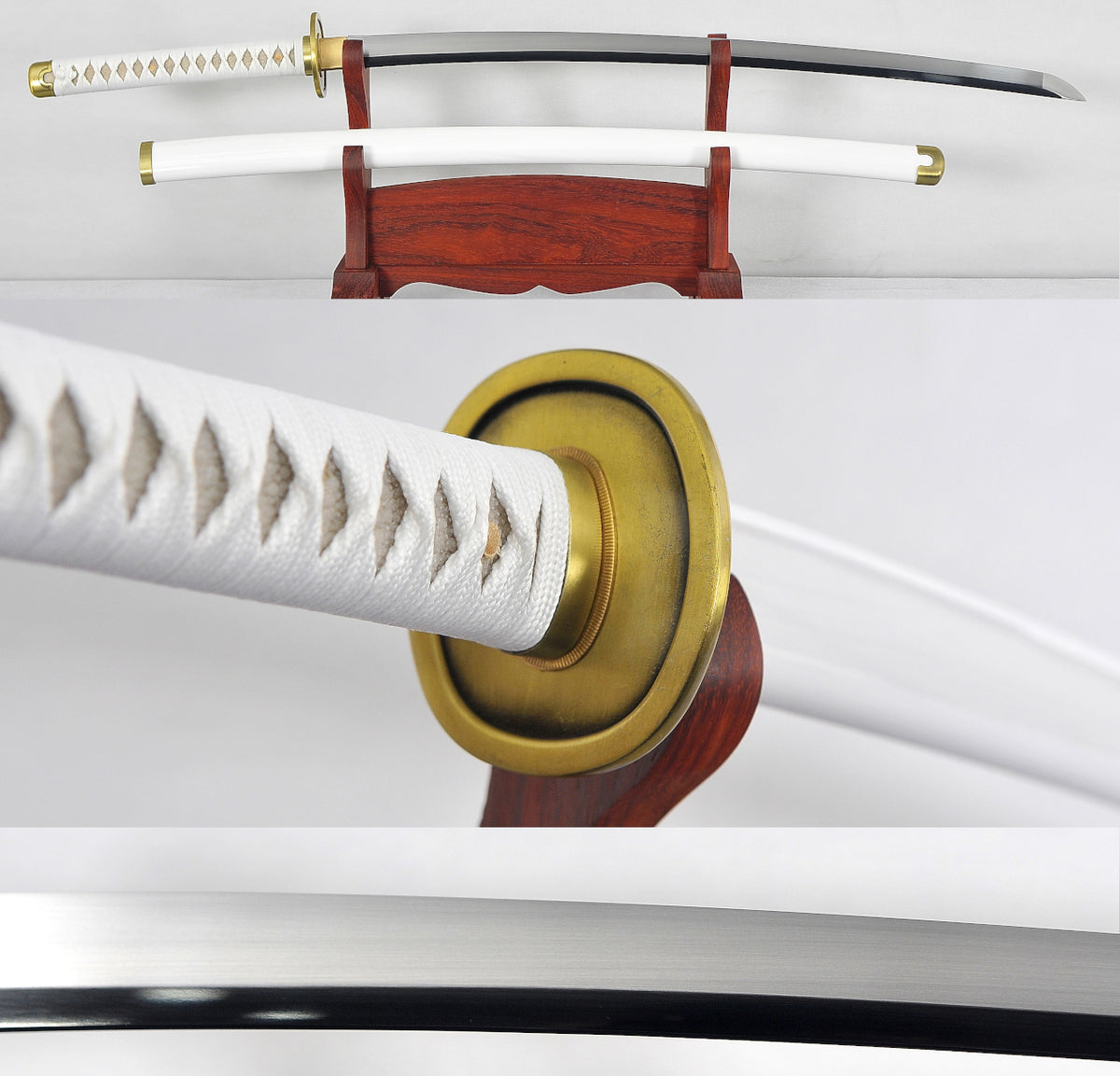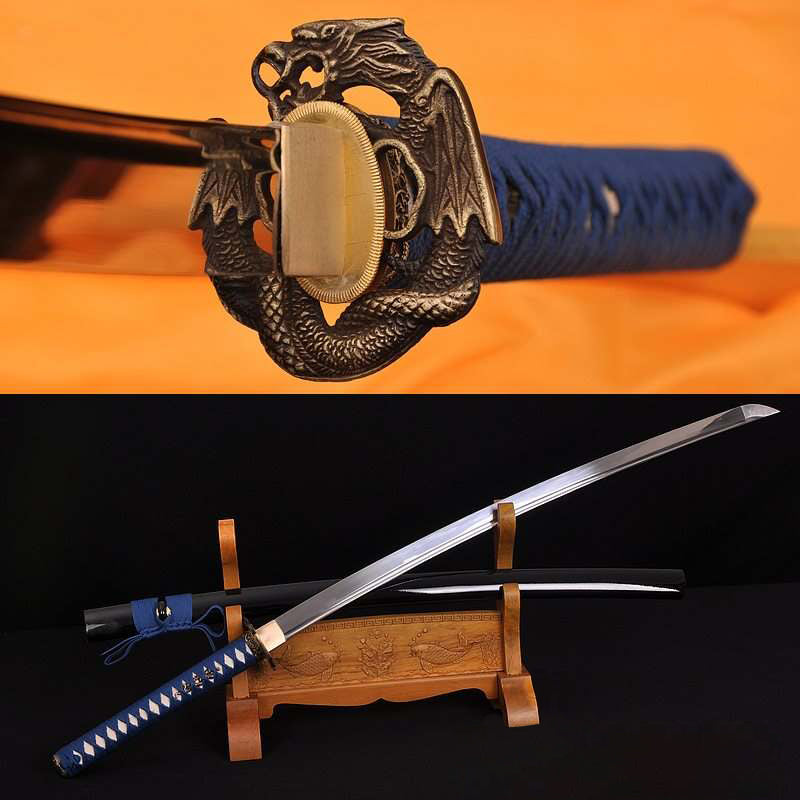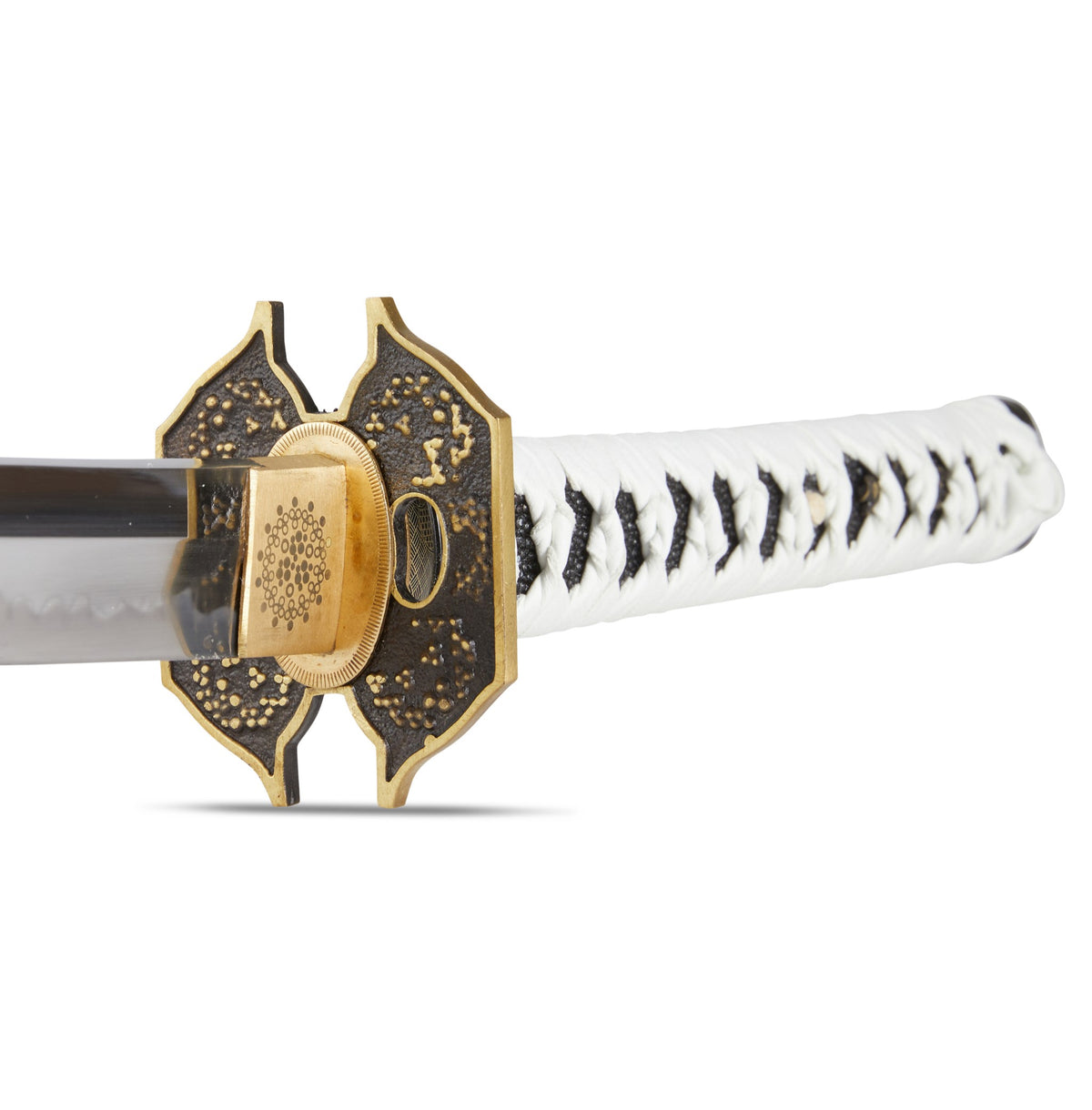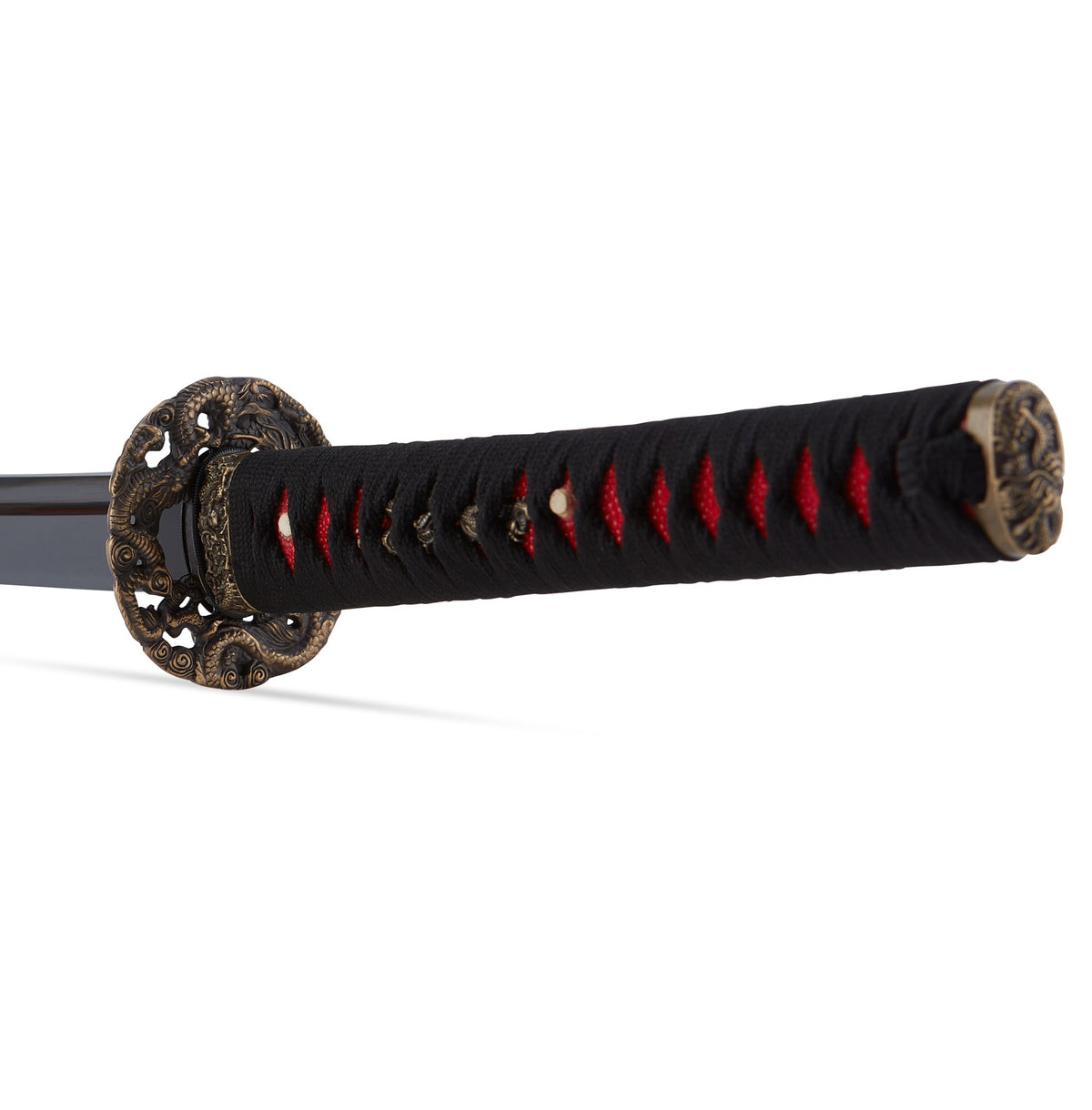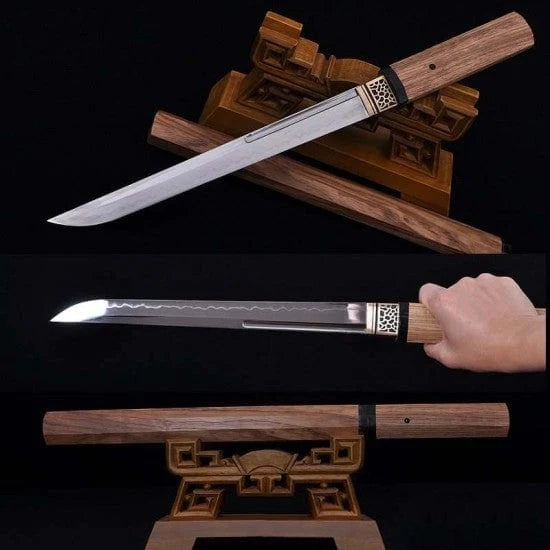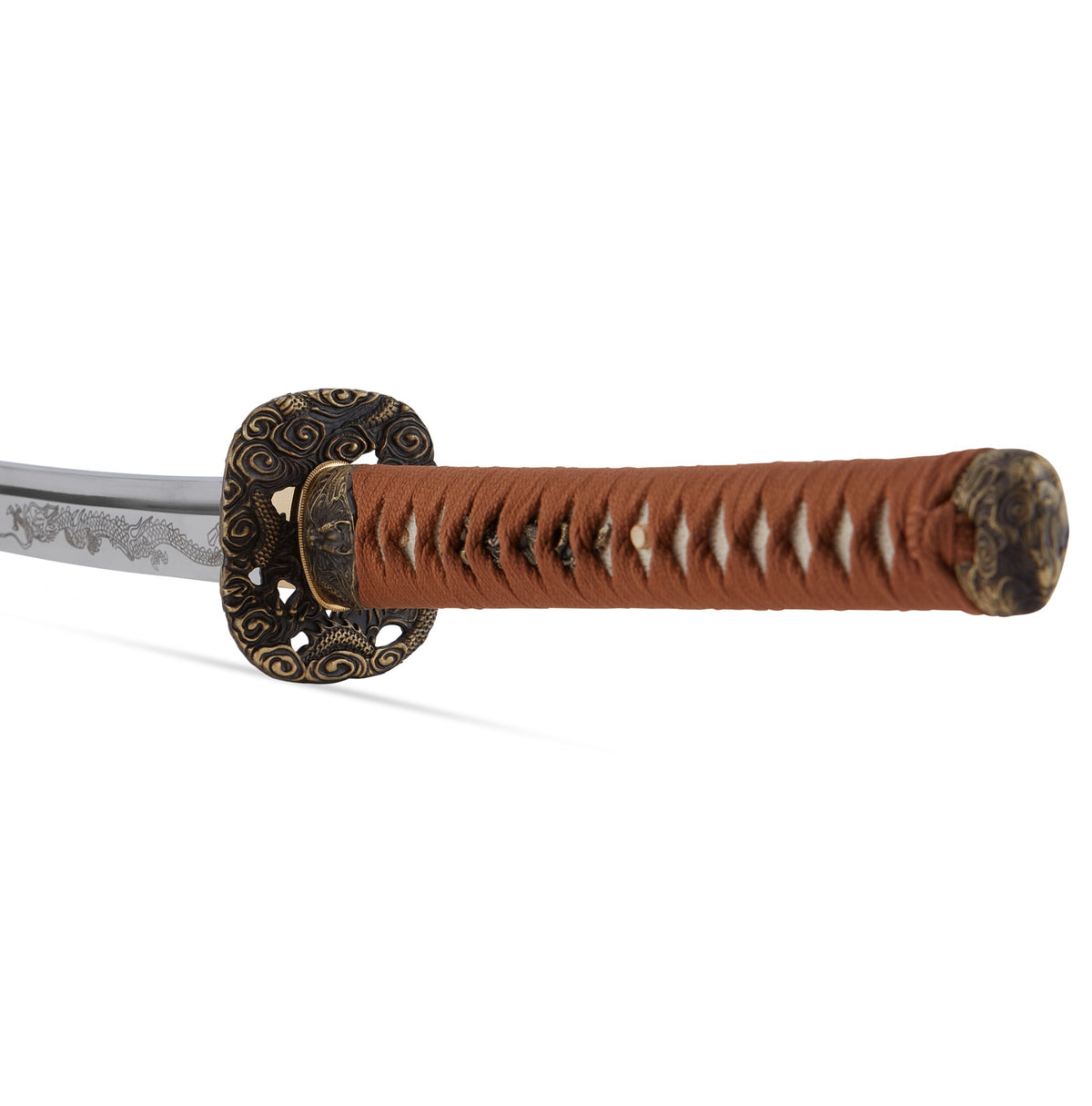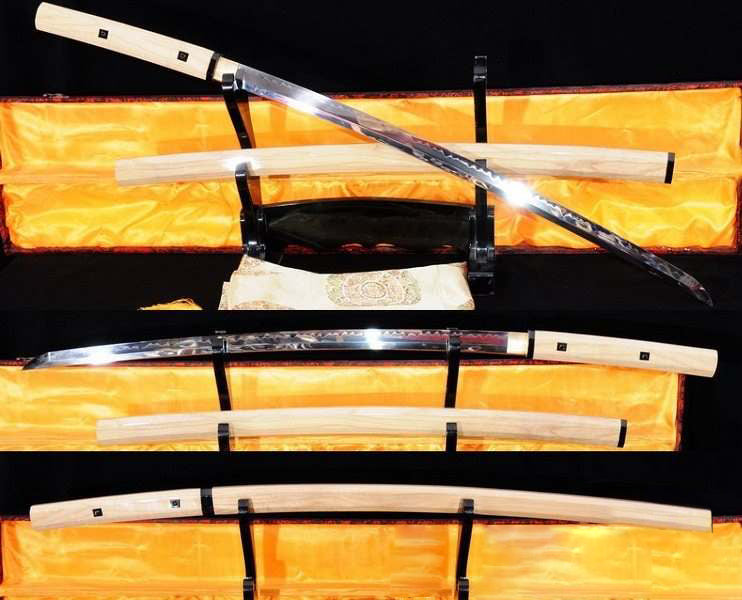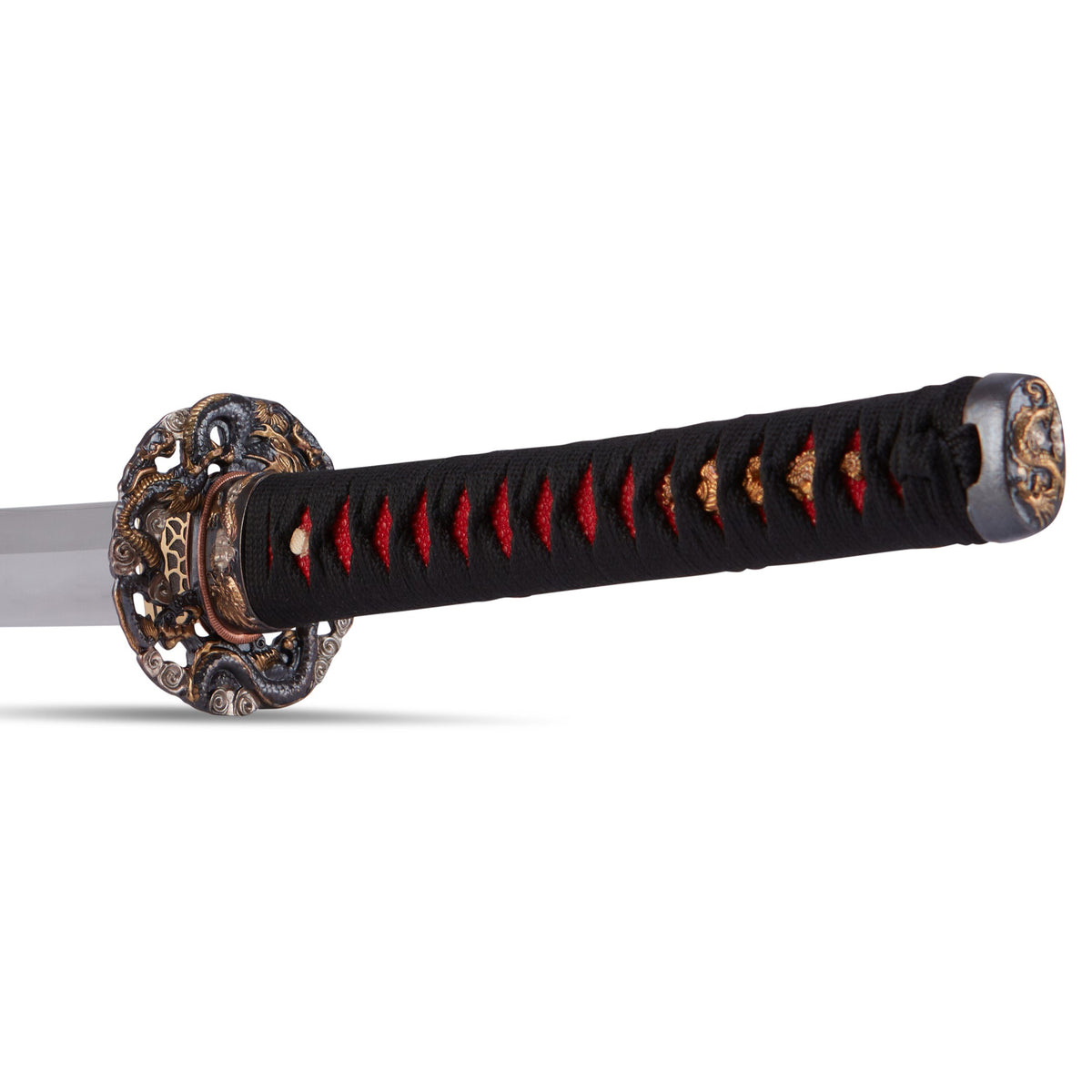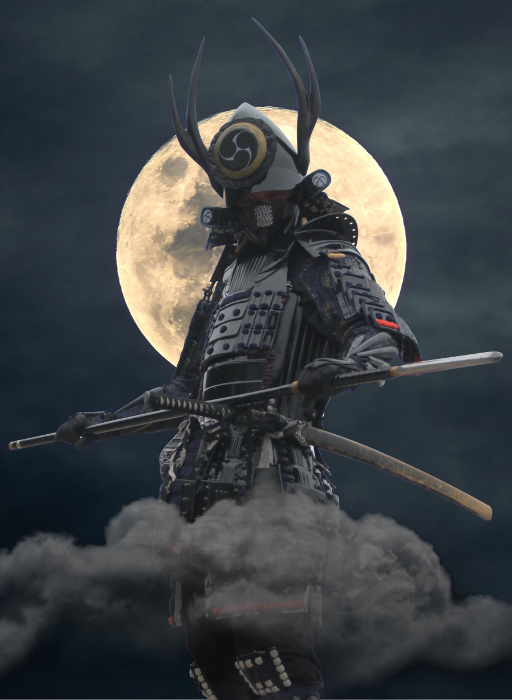Japanese Sword Types
The rich tapestry of Japanese history is interwoven with the evolution of its iconic bladed weapons. From the battlefields of feudal lords to the ceremonial practices of modern martial artists, Japanese swords have stood as symbols of honor, craftsmanship, and cultural identity.
This guide delves into the diverse world of Japanese swords, offering insights into their unique designs, historical significance, and the warriors who wielded them.
Whether you're a seasoned martial artist, a history enthusiast, or simply curious about these elegant weapons, this comprehensive overview will illuminate the artistry and legacy of Japan's legendary blades.
Japanese Sword Types
- Bokken (木剣)
- Chokutō (直刀)
- Iaitō (居合刀)
- Kabutowari (兜割)
- Katana (刀)
- Kodachi (小太刀)
- Kogarasu Maru (小烏丸)
- Kogatana (小刀)
- Naginata (長刀)
- Ninjatō (忍者刀)
- Ōdachi (大太刀) or Nodachi (野太刀)
- Tachi (太刀)
- Tantō (短刀)
- Uchigatana (打刀)
- Wakizashi (脇差)
- Yari (槍)
Bokken (木剣)
The Bokken, or Bokutō, is a wooden sword primarily used for training in various Japanese martial arts. It mimics the size and shape of a katana, typically measuring around 100 cm in length.
The Bokken has been used for centuries and is preferred for kata (forms) practices and sometimes for sparring, offering a safer alternative to live blades. It was also historically used by samurai as a sub-weapon and for training.
Chokutō (直刀)
The Chokutō is one of the earliest types of Japanese swords, characterized by its straight blade. Originating in the late Heian period (794-1185 AD), it was heavily influenced by Chinese sword designs. The Chokutō typically measures around 70-80 cm in length. It was used by the ancient warriors of Japan before the development of the curved blades that became prevalent.
Iaitō (居合刀)
The Iaitō is a non-sharpened sword primarily used for Iaido practice. It closely resembles the katana in terms of appearance but is made from an alloy rather than steel, making it lighter and unsharpened. Typically, an Iaitō sword measures around 100 cm in length. It became popular in the 20th century as a safe alternative for martial artists to practice drawing techniques without the risk of a live blade.
Kabutowari (兜割)
Also known as the "helmet breaker" or "helmet splitter," the Kabutowari resembles a knife or a short sword. It was designed to pierce or break an opponent's helmet during combat. Historically used by samurai during the feudal era, it measures around 35-40 cm in length. The Kabutowari was often a secondary weapon, complementing the primary sword.
Katana (刀)
The Katana is perhaps the most iconic of all Japanese swords. With a distinctive curved, single-edged blade, it was used by samurai from the late Muromachi period (1336-1573 AD) onwards. Authentic Katanas measure between 70-80 cm in blade length. It was the primary weapon of the samurai, symbolizing their honor and warrior spirit.
Kodachi (小太刀)
The Kodachi, often referred to as the "short tachi," is a traditional Japanese sword characterized by its compact size. With a blade length typically ranging between 30 to 60 cm, the Kodachi occupies a space between the longer tachi and the shorter tantō. Historically, its origins are somewhat nebulous, with some experts suggesting it emerged during the Kamakura period (1185–1333 AD).
The Kodachi was not merely a battlefield weapon; its size made it suitable for close-quarters combat and indoor confrontations. Unlike many other Japanese swords, the Kodachi was often not worn but carried, ready for immediate use. Its design, usage, and significance make it a unique and intriguing facet of Japan's martial heritage.
Kogarasu Maru (小烏丸)
The Kogarasu Maru, or "Little Crow," is a unique double-edged sword with a slight curve. Its origins are somewhat mysterious, but it's believed to date back to the Heian period. The blade length varies but is typically around 80 cm. This sword is a rarity and is often associated with legendary tales and myths in Japanese culture.
Kogatana (小刀)
The Kogatana is a small utility knife, often fitting into a pocket on the scabbard of larger swords like the katana or wakizashi. Measuring around 20 cm or less, it was used for various tasks, from personal grooming to auxiliary combat functions. Samurai during the Edo period (1603-1868 AD) often carried the Kogatana as part of their daisho, the paired long and short swords.
Naginata (長刀)
The Naginata is a polearm with a curved blade affixed to the end. It became popular during the Heian period and was often used by warrior monks and female samurai. The blade itself typically measures around 30-60 cm, but when attached to the pole, the total length can exceed 200 cm. The Naginata was valued for its reach and versatility, especially against cavalry.
Ninjatō (忍者刀)
The Ninjatō, often associated with ninja, is a straight-bladed sword. It's shorter than a katana, typically measuring around 60 cm. Popularized in movies and folklore, its historical accuracy is debated. However, it's often portrayed as the preferred weapon of the stealthy ninja, used not just for combat but also for climbing and other covert activities.
Ōdachi (大太刀) or Nodachi (野太刀)
The Ōdachi or Nodachi sword is a large field sword, significantly longer than the typical katana. With blade lengths often exceeding 90 cm, it was used primarily on battlefields, especially during the 14th and 15th centuries. Due to its size, it was sometimes used by foot soldiers to counter cavalry.
Tachi (太刀)
The Tachi is an older style of sword that predates the katana. It's characterized by a more pronounced curve and is often longer, with blade lengths ranging from 70-80 cm. Originating in the late Heian period, the Tachi sword was worn suspended edge-down by samurai, especially by mounted warriors. Over time, many Tachi were reforged into katana.
Tantō (短刀)
The Tantō is a Japanese knife or dagger with a blade length under 30 cm. Originating in the Heian period, it was worn by samurai both as a weapon and a tool. Real Tantō blades were used in close combat situations and for ritual purposes, such as seppuku.
Uchigatana (打刀)
The Uchigatana is a predecessor to the katana, worn edge-up. It became popular during the Muromachi period, with a blade length typically ranging from 60-80 cm. The Uchigatana was a common weapon among samurai and ashigaru (foot soldiers) and was known for its versatility in various combat scenarios.
Wakizashi (脇差)
The Wakizashi is a shorter companion sword to the katana, often worn together in what's known as the daisho. It typically measures between 30-60 cm in length. Used by samurai from the Muromachi period onwards, the Wakizashi served various purposes, from being a backup weapon to its use in ritual seppuku (harakiri).
Yari (槍)
The Yari is a straight-bladed spear used by samurai and foot soldiers alike. Its design varied, with blade lengths ranging from 20-60 cm, but when affixed to a long shaft, the total length could be several meters. The Yari was especially effective against cavalry and in formations, making it a staple on the battlefield.
Additional Terms and Sword Features
Gunome (互の目)
Gunome isn't a type of sword but rather a specific pattern of hamon (temper line) on the blade. The Gunome pattern resembles a series of semi-circular waves. This design became popular during the Muromachi period and can be found on various types of Japanese swords, especially on katanas. The pattern not only adds aesthetic value but also indicates the differential tempering technique used in forging.
Habaki (鎺)
The Habaki is a crucial component of a Japanese sword, though not a sword type itself. It's a metal collar that sits at the base of the blade, ensuring the sword doesn't fall out of its scabbard and supporting the fittings below. The Habaki plays a vital role in the balance and fitting of the sword, ensuring its longevity and functionality.
Kissaki (切先)
Kissaki refers to the point or tip of a Japanese blade. It's an essential part of the sword, with various styles like Ko-Kissaki (small), Chu-Kissaki (medium), and O-Kissaki (large). The design and finish of the Kissaki are crucial for the sword's cutting ability and overall aesthetics. It's a testament to the swordsmith's skill and craftsmanship.
Shinogi-Zukuri (鎬造)
Shinogi-Zukuri refers to the most common blade cross-sectional shape, featuring a distinct ridge line. This design is prevalent in many Japanese swords, especially the katana. The Shinogi-Zukuri design contributes to the blade's strength and cutting ability, making it a favorite among samurai.
Shinken (真剣)
Shinken translates to "real sword." It's a live blade, as opposed to a blunt or practice blade. A Shinken is sharp and made for combat, though in modern times, it's often used for ceremonial purposes or Iaido practice. Its dimensions can vary, but it often mirrors the katana in size and shape.
Best Sellers
- Regular Price
- from $199.99
- Sale Price
- from $199.99
- Regular Price
-
- Unit Price
- per
- Regular Price
- from $299.00
- Sale Price
- from $299.00
- Regular Price
-
- Unit Price
- per
- Regular Price
- from $199.00
- Sale Price
- from $199.00
- Regular Price
-
$0.00
- Unit Price
- per
- Regular Price
- from $619.00
- Sale Price
- from $619.00
- Regular Price
-
- Unit Price
- per
- Regular Price
- from $319.00
- Sale Price
- from $319.00
- Regular Price
-
- Unit Price
- per
- Regular Price
- from $249.00
- Sale Price
- from $249.00
- Regular Price
-
- Unit Price
- per
- Regular Price
- from $339.00
- Sale Price
- from $339.00
- Regular Price
-
- Unit Price
- per
- Regular Price
- from $219.00
- Sale Price
- from $219.00
- Regular Price
-
- Unit Price
- per
- Regular Price
- from $364.00
- Sale Price
- from $364.00
- Regular Price
-
- Unit Price
- per
- Regular Price
- from $519.00
- Sale Price
- from $519.00
- Regular Price
-
- Unit Price
- per
